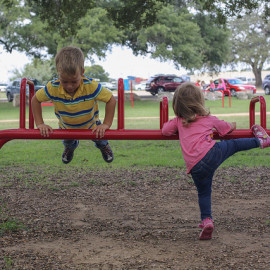It can be easy to settle into one form of exercise. Everything from lack of time to personal preference can lead to one sided exercise routines. The body needs more than that to stay functioning optimally. Here are three key things to understand to help get the most out of your exercise.
Strength Is On A Spectrum
You can think of strength as being on a spectrum. On one end there is the maximum amount of weight you can lift one time. On the other end you have light weights that you can lift many times in a row. In the middle of the spectrum are weights that are relatively heavy, but that you can lift somewhere between 8 and 12 times. And of course, you have everything in between those three points.
The important thing to note is that each has its own characteristics. Lifting 5 pounds 100 times is not at all equivalent to lifting 500 pounds once. It is very common for runners to have very weak legs and hips for example, and for weight lifters to have no endurance. Each is missing out on important parts of health.
Cardiovascular Is On A Spectrum
Cardio trains your circulatory system. Just like with strength training there is a spectrum. On one end is long slow distance, on the other end is an all out sprint, and in the middle is moderate intensity for moderate distance. It is interesting to know that the body has specific physiological systems that it uses to power each point on the spectrum. One system provides fast energy for all out efforts, but it doesn’t last long. Another system is for middle efforts, and one system is for long endurance efforts.
As with strength training, each of these has its own characterstics. Running 800 meters non-stop is not the same as running 8 all-out 100 meter sprints – and neither of those is like running 5 miles. If you are competing, then it might make sense to focus most of your time on one area, but if you are looking for overall good health, you may want to utilize aspects of all three.
Mobility and Flexibility, Active And Passive
Mobility is the ability of a joint to move in and out of positions. Flexibility is the ability of a muscle to lengthen. A key thing to know here is that there are active and passive ways to work on both. Having someone push your leg back or letting gravity pull you down as you bend forward with arms dangling are both passive because there is an external force making the muscle and joints move. An active version would be moving into a position under your own power, such as lowering into a squat or deadlift or raising your arm overhead.
Again, there are important differences here. Moving the whole body under control into a position is more complicated than having an external force do it for you. Stretching passively can help muscles learn to lengthen better, but it might not translate into ideal movement. For that, you’ll need some active movement patterns in your exercise routine.
What It Means
As you can hopefully see, the body is a collection of many different but overlapping capabilities. Together, they empower us with a broad spectrum of movement. To be at your best, don’t get stuck in a rut of doing the same kind of exercise all the time. Instead, try to train each of the different areas. Remember, in life good movement is key to good health.
RELATED
Progressive Training Vs. Aggressive Training
PHOTO: Lars Plougmann, Exercise, License

Pingback: Fitness Is Like A Career - You've Got To Build - do the movement June 22, 2016
[…] Exercise Is Many-Sided […]